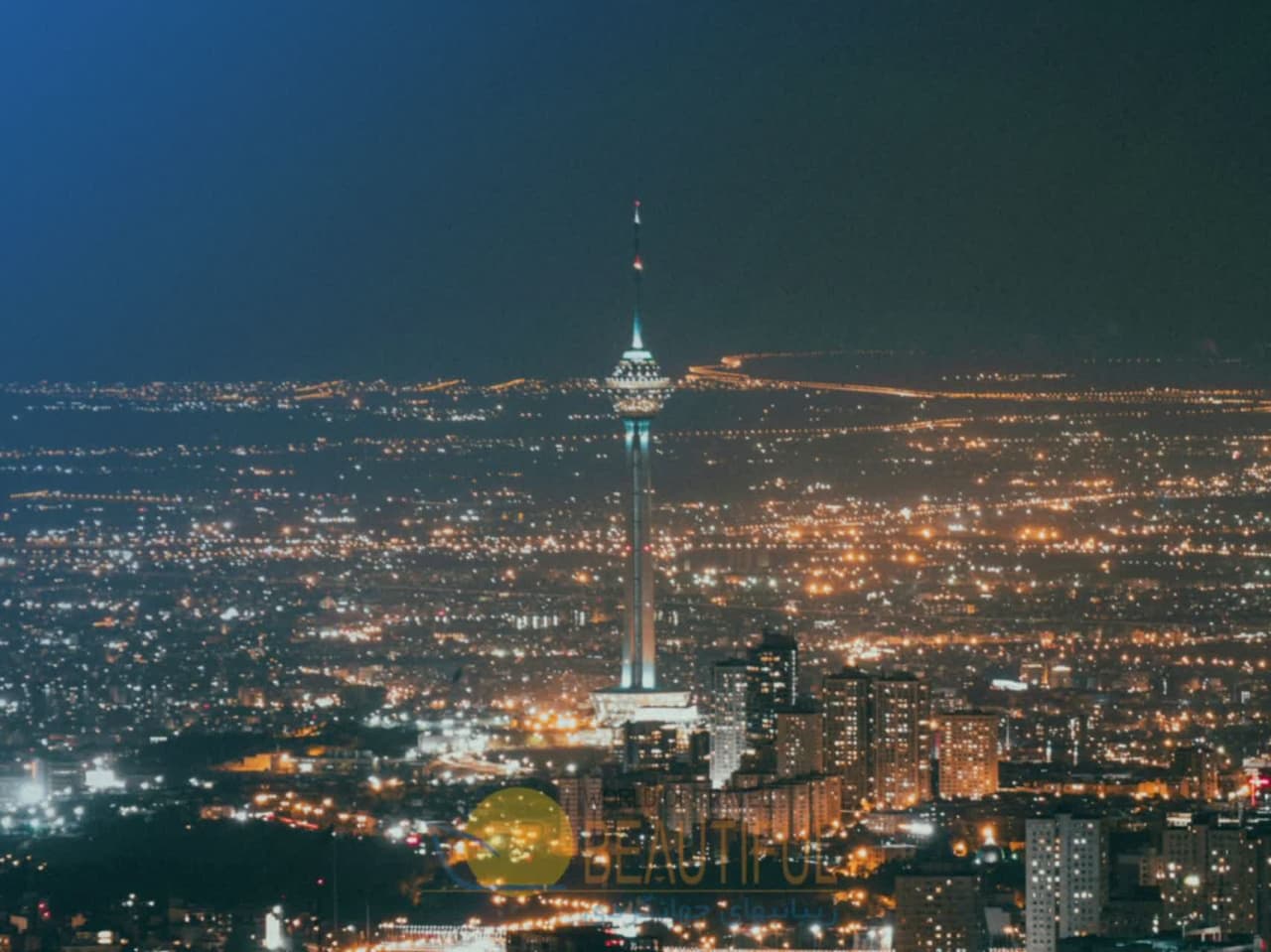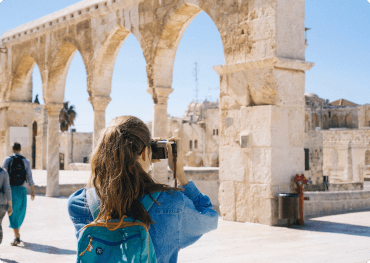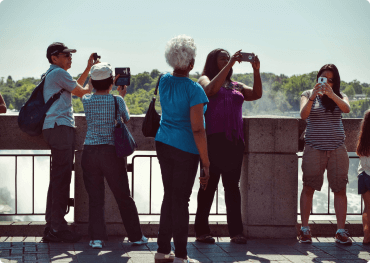
Tehran, Qom, kashan, Ifsahan, Shiraz, Mashhad
CL-533
Package Details
Day 1: Flight from your home country to Tehran
We prepare ourselves for a fabulous trip to Great Persia. Arrival to Tehran, after custom formality, meet and assist at airport and transfer to the Hotel.
O/N: Tehran
Day 2: Tehran
After breakfast, full day visit Tehran: Niyavaran Palace, Imamzadeh Saleh & Tajrish Bazaar
O/N: Tehran
The Niavaran Complex is a historical complex situated in Shemiran, Tehran (Greater Tehran), Iran. It consists of several buildings and monuments built in the Qajar and Pahlavi eras. The complex traces its origin to a garden in Niavaran region, which was used as a summer residence by Fath-Ali Shah of the Qajar Dynasty. A pavilion was built in the garden by the order of Naser ed Din Shah of the same dynasty, which was originally referred to as Niavaran House, and was later renamed Saheb Qaranie House. The pavilion of Ahmad Shah Qajar was built in the late Qajar period.During the reign of the Pahlavi Dynasty, a modern built mansion named Niavaran House was built for the imperial family of Mohammad Reza Pahlavi. All of the peripheral buildings of the Saheb Qaranie House, with the exception of the Ahmad Shahi Pavilion, were demolished, and the buildings and structures of the present-day complex were built to the north of the Saheb Qaranie House. In the Pahlavi period, the Ahmad Shahi Pavilion served as an exhibition area for the presents from world eaders to the Iranian monarchs.
Imamzadeh Saleh is one of many imamzadeh mosques in Iran. The mosque is located at Tajrish Square in Tehran's northern Shemiran district. The mosque entombs the remains of Saleh, a son of the Twelver Shia Imam, Musa al- Kadhim, and is one of the most popular Shia shrines in northern Tehran.
The main mausoleum building includes a large rectangular building with thick walls and solid inner space of almost 5. 6 square meters. In the year 700 AH Imam Zadeh Saleh there is an inscription that appears in the repair and alteration of entries has gone according to which the Kingdom of Ghazan Khan was at the same time. Imam ZadeSaleh large wooden box inside the tomb probably belonged to the era of the late Safavid or Afsharid dynasties. Silver enshrine the eastern and north-eastern and western sides have netted enclosure is decorated with silver and wood lattice south side of the endowment of the late Mr. Mirza Saeed khan foreign minister late Qajar. The shrine is located on the north side entrance porch and the porch of the sanctuary, the tablet is rectangular adobe tile on its history in 1210 AH and the name of Fath-Ali Shah Qajar has been engraved on it.
Tajrish Market: The market on the one hand and Rehabilitation field, from the other competent shrine and the surrounding streets have access. Reliance Big Rehabilitation is one of the oldest accents located in Tehran in this market. Rehabilitation market a small sample of the Tehran bazaar is one of the oldest shopping centers Shamiran is the bridgehead and Rehabilitation connecting the two neighborhoods.
Day 3: Tehran – Qom – Kashan
After breakfast, check out hotel and drive to Kashan (247 km) en route visit Qom. Afternoon arrival to Kashan and visit Fin Garden.
O/N: Kashan.
Fatema Al Masooma Holy Shrine: in the tomb with a long 20/1 and 95/2 in the length and width of 20.1 meters, and tiles and Zarfam (the seventh century covered. Around the shrine, two-meter-high wall length and width approximately (80/4 to 40/4), which was built in the year 950 and was adorned with mosaic tile wall is now covered with silver grille shrine.
History of the shrine of Fatima M during different periods has been changed.
In the year 605 AD, "Amir Muzaffar Ahmad Bin Ismail," Patriarch al-Muzaffar, the greatest master Kashysaz that time, "Mohammed ibn Abu Taher Qomi tiles" used to build and pay tiles made of various shrines. He worked for eight years until he was placed in 613 Tile Ready shrine.
According to Chardin, a French traveler Safavid era, the inscription on the entrance of the word "keen understanding" was printed for record of the year, according to the account Abjd 1065 (the reign of Shah Abbas II) is.In 1377 new solar shrine in the form of a mix of tile and stone was rebuilt and the interior walls were decorated with green marble.
Fin Garden, or Bagh-e Fin, located in Kashan, Iran, is a historical Persian garden. It contains Kashan's Fin Bath, where Amir Kabir, the Qajarid chancellor, was murdered by an assassin sent by King Nasereddin Shah in 1852. Completed in 1590, the Fin Garden is the oldest extant garden in Iran
The origins of the garden may be anterior to the Safavid period; some sources indicate that the garden has been relocated from another place, but no clear picture of it has been found.
Day 4: Kashan - Isfahan
After breakfast, full day visiting Kashan, Broujerdi and Tabatabai houses, Aqhabozorg Mosque, Evening drive to Isfahan (483 km).
O/N: Isfahan
Home Borujerdian the historic city of Kashan is. The building is located in the neighborhood Sultan Mir Ahmad and in the second half of the 13th century Hijri built in Qajar era and was registered under the number 1083 in the national index. The house has a beautiful crescent-shaped symmetrical vents on the roof of the hall and pergola on one of the most beautiful manifestations of Persian architecture to display it. So that the inscriptions on all four sides of the hall, the building dates back to 1292 BC E..
Home Tabatabaian which was registered under number 1504, in the second half of the 13th century AH by Haj Seyed Jafar Tabatabai merchants Natanz resident of Kashan in the neighborhood Sultan Amir Ahmad was built.
Architect manufacturer of the master Ustad Ali Maryam and plaster involved in the art and drawings by students Mirza Abul Hassan Sani-ol-Molk Ghaffari Kashani, and under him were doing.
Agha Bozorg Mosque is a historical mosque in Kashan, Iran. The mosque was built in the late 18th century by master-mimar Ustad Haj Sa'ban-ali.
The mosque has been described as "the finest Islamic complex in Kashan and one of the best of the mid- 19th century. Noted for its symmetrical design, it consists of two large iwans, one in front of the mihrab and the other by the entrance. The courtyard has a second court in the middle which comprises a garden with trees and a fountain.
Day 5: Isfahan
After breakfast, full day visit Isfahan. At night visit visit old bridiges ( Khajoo & Si o Se Pol).
O/N: Isfahan
Naqsh-e Jahan Square known as Imam Square, formerly known as Shah Square, is a square situated at the center of Isfahan city, Iran. Constructed between 1598 and 1629, it is now an important historical site, and one of UNESCO's World Heritage Sites. It is 160 meters (520 ft.) wide by 560 meters (1,840 ft) long (an area of 89,600 square meters (964,000 sq. ft.)). The square is surrounded by buildings from the Safavid era. The Shah Mosque is situated on the south side of this square. On the west side is the Ali Qapu Palace. Sheikh Lotf Allah Mosque is situated on the eastern side of this square and at the northern side Keisaria gate opens into the Isfahan Grand Bazaar
Ali Qapu is a grand palace in Isfahan, Iran. It is located on the western side of the Naqsh e Jahan Square, opposite to Sheikh Lotfollah Mosque, and had been originally designed as a vast portal. It is forty-eight meters high and there are seven floors, each accessible by a difficult spiral staircase. In the sixth floor, Music Hall, deep circular niches are found in the walls, having not only aesthetic value, but also acoustic.
Fresco from the portico of the palace, depicting a Persian woman
The name Ali Qapu, from Arabic "Ālī" (meaning "imperial" or "great"), and Turkic "Qāpū" (meaning "gate"), was given to this place as it was right at the entrance to the Safavid palaces which stretched from the Naqsh e Jahan Square to the Chahar Baq Boulevard. The building, another wonderful Safavid edifice, was built by decree of Shah Abbas I in the early seventeenth century. It was here that the great monarch used to entertain noble visitors, and foreign ambassadors. Shah Abbas, here for the first time, celebrated the Nowruz (Iranian New Year) of 1006 AH / 1597 C E.
Ali Qapu is rich in naturalistic wall paintings by Reza Abbasi, the court painter of Shah Abbas I, and his pupils. There are floral, animal, and bird motifs in his works. The highly ornamented doors and windows of the palace have almost all been pillaged at times of social anarchy.
Only one window on the third floor has escaped the ravages of time. Ali Qapu was repaired and restored substantially during the reign of Shah Sultan Hussein, the last Safavid ruler, but fell into a dreadful state of dilapidation again during the short reign of invading Afghans. Under the reign of Nasir Ol Din Shah e Qajar (1848–96), the Safavid cornices and floral tiles above the portal were replaced by tiles bearing inscriptions.
Sheikh Lotfollah Mosque is one of the architectural masterpieces of Safavid Iranian architecture, standing on the eastern side of Naghsh-i Jahan Square, Isfahan, Iran.
Construction of the mosque started in 1603 and was finished in 1619. It was built by the chief architect Shaykh Bahai, during the reign of Shah Abbas I of the Safavid dynasty.Construction of the mosque started in 1603 and was finished in 1619. It was built by the chief architect Shaykh Bahai, during the reign of Shah Abbas I of the Safavid dynasty.
The Bazaar of Isfahan or Isfahan Bazaar is a historical market in Isfahan, Iran, one of the oldest and largest bazaars in the Middle East, dating back to the 17th century. The bazaar is a vaulted two-kilometre street linking the old city with the new.
The Bazaar of Isfahan is located in downtown old Isfahan, Iran, in the northern section of the Naqsh-e Jahan Square. The main entrance called Qeisarieh and you can walk all along to the Friday mosque Jameh Mosque the oldest mosque in Isfahan, and one of the oldest in Iran.
Before you enter the Grand Bazaar, if you look back you will see the magnificent view of the square, which is one of the biggest squares in the entire world. All around the square are bazaars full of magnificent Persian handicrafts.
Khaju Bridge is a bridge in the province of Isfahan, Iran, which has been described as the finest in the province. It was built by the Persian Safavid king, Shah Abbas II around 1650, on the foundations of an older bridge.
Serving as both a bridge, and a dam (or a weir), it links the Khaju quarter on the north bank with the Zoroastrian quarter across the Zayandeh River. Although architecturally functioning as a bridge and a weir, it also served a primary function as a buildingand a place for public meetings. This structure was originally decorated with artistic tilework and paintings, and served as a teahouse.
Allāhverdi Khan Bridge, popularly known as Si-o-seh pol “The bridge of thirty-three spans” is one of the eleven bridges of Isfahan, Iran and the longest bridge on Zayandeh River with the total length of 297.76 metres (976.9 ft). It is highly ranked as being one of the most famous examples of Safavid bridge design.
It was constructed by the finance and the inspection of Allahverdi Khan Undiladze chancellor of Shah Abbas I, an ethnic Georgian, it consists of two rows of 33 arches from either sides, left and right.
There is a larger base plank at the start of the bridge where the Zayandeh River flows under it, supporting a tea house which nowadays is abandoned due to the shortage of water and the river drought.
Day 6: Isfahan – Shiraz
After breakfast, check out hotel and drive to Shiraz (483 km).In the way visit Perspolis. Evening arrival to Shiraz. At night visit Shah Cheragh Shrine.
O/N: Shiraz
Persepolis the name of one of the ancient cities of Iran that joined over the years, the capital’s stately and ceremonial monarchy at the time of the Achaemenid Empire was. In this ancient city called Persepolis palace that during the reign of Darius, Xerxes and Artaxerxes was built and was built for about 200 years. On the first day of the New Year, many groups from different countries representing Satrapyha or governments gathered in Persepolis with diverse took offerings and gifts were presented to the king.
Persepolis in 518 BCE as the new capital of the Achaemenid the gamers began.
Founder of Persepolis, Darius was, of course, after his son Xerxes and his grandson Artaxerxes I to extend this series to expand it added. Many existing knowledge about the history and culture of the Achaemenid stone inscriptions and Flznvshthhayy is available for the palaces and on the walls and the tablet is engraved Sumner has estimated that the plain of Persepolis which contains 39 residential camp was in the Achaemenid period 43, 600 people had. Historians believe that Alexander the Macedonian commander Greek in 330 BC, invaded Iran and burned Persepolis and probably a large part of the books, Achaemenid art and culture destroyed by it. However, the ruins of this place is still up and archeology of its ruins signs of fire and rush to acknowledge it.This place since 1979, one of Iran's record on the UNESCO World Heritage is.
Shāh Chérāgh is a funerary monument and mosque in Shiraz, Iran, housing the tomb of the brothers Ahmad and Muhammad, sons of Mūsā al-Kādhim and brothers of ‘Alī ar-Ridhā. The two took refuge in the city during the Abbasid persecution of Shia Muslims.The site is the most important place of pilgrimage within the city of Shiraz. Ahmad came to Shiraz at the beginning of the third Islamic century (approximately 900 AD), and died there.
During the rule of Atabeg Abū Sa'id Zangi (~1130s AD) of the Zengid dynasty, the chief minister to the monarch by the name of Amir Muqarrab al-din Badr al-din built the tomb chamber, the dome, as well as a colonnaded porch. The mosque remained this way for roughly 200 years before further work was initiated by Queen Tash Khātūn (the mother of Shāh Abū Ishāq Injū) during the years 1344-1349 (745-750 AH). She carried out essential repairs, constructed an edifice, a hall of audience, a fine college, and a tomb for herself on the south side. She also presented a unique Qur'an of thirty volumes, written in golden thuluth characters with gold decoration, in the style of the calligraphist of that period, Yahya Jamali. The date written on the Qur'an indicates that they were written from 1344-1345 (754-746 AH). Nothing now remains of the buildings set up by Queen Tash Khātūn, but the Qur'ans have remained and are preserved in the Pars Museum. The mosque again underwent necessary repairs in 1506 (912 AH - under the reign of Shāh Ismā‘īl I), which were initiated by the guardian of the mosque at the time, Mirza Habibullah Sharifi. The mosque was again repaired in 1588 (997 AH) when half of the structure collapsed as a result of an earthquake. During the nineteenth century, the mosque was damaged several times and was subsequently repaired. In 1827 (1243 AH), Fat'h ‘Alī Shāh Qājār presented an ornamental railing for the tomb. Another earthquake shook the mosque in 1852 (1269 AH), and repairs were carried out by Muhammad Nasir Zahir ad-Dawla. Finally, the late Nasirol'molk repaired the dome, but on account of the numerous cracks, in 1958 the whole dome was removed, and in its place an iron structure, which was lighter, and likely to last longer, in the shape of the original dome, was made at the cost of the people of Shiraz. The present building consists of the original portico, with its ten columns, on the eastern side, a spacious sanctuary with lofty alcoves on four sides, a mosque on the western side of the sanctuary, and various rooms. There are also numerous tombs contiguous to the Mausoleum. The decorative work in a mosaic of mirror glass, the inscriptions in stucco, the ornamentation, the doors covered with panels of silver, the portico, and the wide courtyard are most attractive. The tomb, with its latticed railing, is in an alcove between the space beneath the dome and the mosque. And this custom of placing the tomb in this position, so that it is not directly under the dome, is to be seen in other famous places of pilgrimage in the city of Shiraz, and may be considered a special feature of Shiraz shrines. Two short minarets, situated at each end of the columned portico, add impressiveness to the Mausoleum, and to the spacious courtyard, which surrounds it on three sides. The Shah-e-Cheragh Mausoleum was registered on the 20th of the month, Bahman, 1318, under No. 363 in the list of the national monuments of Iran.
Day 7: Shiraz
After breakfast, full day visit Shiraz: Qavam House, Vakil Market & Bath & Mosque. Evening visit Eram Garden.
O/N: Shiraz
The Tomb of Hafez and its associated memorial hall, the Hāfezieh, are two memorial structures erected in the northern edge of Shiraz, Iran, in memory of the celebrated Persian poet Hafez. The open pavilion structures are situated in the Musalla Gardens on the north bank of a seasonal river and house the marble tomb of Hafez. The present buildings, built in 1935 and designed by the French architect and archaeologist André Godard, are at the site of previous structures, the best-known of which was built in 1773. The tomb, its gardens, and the surrounding memorials to other great figures are a focus of tourism in Shiraz.
Vakil Bazaar collection of his era, and in Shiraz, after the municipal field, near Karim Khan Citadel taken place and the effect on 17 Persian date Tir 1351 with registration number 924 as one of the national monuments has been registered.Vakil Bazaar in Shiraz, one of the most traditional and historical markets of Iran is. The market at the behest of Karim Khan Zand (1172 - 1193 AH.) Made, now at the center of the city of Shiraz (East Martyrs' Square) is located. Next to other locations such as mosques and historic Bath lawyer also located.
Vakil Bath is an old public bath in Shiraz, Iran. It was a part of the royal district constructed during Karim Khan Zand's reign, which includes Arg of Karim Khan, Vakil Bazaar, Vakil Mosque and many administrative buildings.The monument is inscribed with the number 917 on the list of national works of Iran.
The Vakil Mosque is a mosque in Shiraz, southern Iran, situated to the west of the Vakil Bazaar next to its entrance. This mosque was built between 1751 and 1773, during the Zand period; however, it was restored in the 19th century during the Qajar period. Vakil means regent, which was the title used by Karim Khan, the founder of Zand Dynasty. Shiraz was the seat of Karim Khan’s government and he endowed many buildings, including this mosque.
Eram Garden is a historic Persian garden in Shiraz, Iran.The garden, and the building within it, are located at the northern shore of the Khoshk River in the Fars province. Both the building and the garden were built during the middle of thirteenth century by the Ilkhanate or a paramount chief of the Qashqai tribes of Pars. The original layout of the garden however, with its quadripartite Persian Paradise garden structure was most likely laid in eleventh century by the Seljuqs, and was then referred to as the "Bāq e Shāh" ("the king's garden" in Persian) and was much less complicated or ornamental.
Day 8: Shiraz - Mashhad
After breakfast, check out hotel and transfer to airport and flight to Mashhad.
O/N: Mashhad
The Imam Reza shrine in Mashhad, Iran is a complex which contains the mausoleum of Imam Reza, the eighth Imam of Twelver Shiites. It is the largest mosque in the world by dimension and the second largest by capacity. Also contained within the complex are the Goharshad Mosque, a museum, a library, four seminaries, a cemetery, the Razavi University of Islamic Sciences, a dining hall for pilgrims, vast prayer halls, and other buildings.
Day 9: Mashhad
Full day is free.
O/N: Mashhad
Day 10: Mashhad
After breakfast, drive to Tous to visit Mausoleum of Ferdowsi the great epic poet.
O/N: Mashhad
Ferdowsi's tomb, a monument in a birch in the north of Mashhad in Khakjay Ferdowsi by Houshang Oxus based on previous designs by Karim Taherzadeh Behzad with some variation in size and decoration, design and renovated. Architect and executor of construction work and Hussein Hussein Lorzadeh Hjarbashy Zanjani and salutary Taqi was the construction foreman.
The present building of the tomb in 1313 to coincide with the rituals of Ferdowsi Millennium opened.
Day 11: Departure
Transfer to international airport and flight to home.
Details
Pellentesque accumsan magna in augue sagittis, non fringilla eros molestie. Sed feugiat mi nec ex vehicula, nec vestibulum orci semper. Class aptent taciti sociosqu ad litora torquent per conubia nostra, per inceptos himenaeos. Donec tristique commodo fringilla. Duis aliquet varius mauris eget rutrum. Nullam sit amet justo consequat, bibendum orci in, convallis enim. Proin convallis neque viverra finibus cursus. Mauris lacinia lacinia erat in finibus.
Pellentesque accumsan magna in augue sagittis, non fringilla eros molestie. Sed feugiat mi nec ex vehicula, nec vestibulum orci semper. Class aptent taciti sociosqu ad litora torquent per conubia nostra, per inceptos himenaeos. Donec tristique commodo fringilla.
- Specilaized Bilingual Guide
- Private Transport
- Entrance Fees
- Box Lunch,Water,Dinner and Snacks
Pellentesque accumsan magna in augue sagittis, non fringilla eros molestie. Sed feugiat mi nec ex vehicula, nec vestibulum orci semper. Class aptent taciti sociosqu ad litora torquent per conubia nostra, per inceptos himenaeos. Donec tristique commodo fringilla.
- Specilaized Bilingual Guide
- Private Transport
- Entrance Fees
- Box Lunch,Water,Dinner and Snacks
Pellentesque accumsan magna in augue sagittis, non fringilla eros molestie. Sed feugiat mi nec ex vehicula, nec vestibulum orci semper. Class aptent taciti sociosqu ad litora torquent per conubia nostra, per inceptos himenaeos. Donec tristique commodo fringilla.
- Specilaized Bilingual Guide
- Private Transport
- Entrance Fees
- Box Lunch,Water,Dinner and Snacks
Pellentesque accumsan magna in augue sagittis, non fringilla eros molestie. Sed feugiat mi nec ex vehicula, nec vestibulum orci semper. Class aptent taciti sociosqu ad litora torquent per conubia nostra, per inceptos himenaeos. Donec tristique commodo fringilla.
- Specilaized Bilingual Guide
- Private Transport
- Entrance Fees
- Box Lunch,Water,Dinner and Snacks
Pellentesque accumsan magna in augue sagittis, non fringilla eros molestie. Sed feugiat mi nec ex vehicula, nec vestibulum orci semper. Class aptent taciti sociosqu ad litora torquent per conubia nostra, per inceptos himenaeos. Donec tristique commodo fringilla.
- Specilaized Bilingual Guide
- Private Transport
- Entrance Fees
- Box Lunch,Water,Dinner and Snacks






















